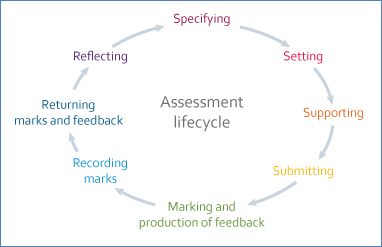The RIDE Conference 2015 featured developments in online learning at scale and provided a reminder of the challenges of pure distance learning.
The opening keynote from Professor Mike Sharples, Social Learning at a Massive Scale, offered an insight to how the Open University and other online course providers are attempting to address the difficulty of learning in large online courses.
Massive open online courses (MOOCs) were initially over-hyped and of course haven’t revolutionised universities. However, these free, short courses are being offered by universities around the world and continue to be taken by tens of thousands of students. An early criticism of MOOCs was a pedagogical one; that the teaching was a traditional, instructivist approach. For many students the ‘courses’ offered little more than a library of video resources in the same way that iTunesU, MIT’s Courseware & the Khan Academy do. However, in his talk Professor Sharples, the academic lead for the OU’s Futurelearn MOOC platform, explained how they are trying to make learning in their MOOCs more effective by providing opportunities for conversations.
Sharples explained that social learning based around conversations can benefit from a network effect. It can scale well. In one example he showed a video resource had received over 17,000 comments. This screamed of information overload to me rather than being beneficial! But Futurelearn has introduced ways to rate the contributions and ‘follow’ specific users so that the most interesting questions and best answers become more visible to students. Even so, students will need to learn to be strategic and, as Futurelearn’s tips for social learning advise, you don’t have to read all comments.
Another approach Futurelearn have taken to encourage participation is to shift the location of these interactions. Rather than having completely separate discussion boards the discussion threads are situated with the content they relate to. This is a feature that our own Blackboard may have in future versions.
Sharples also outlined how they are making use of high student numbers in peer review activities. Students submitting small assignments are allocated other students’ work to comment on. They are encouraged to comment on three. The large student numbers involved means that these kinds of comments can be available quickly. The quality of comments may not always be high, but does that matter? Students will benefit from considering what to write and then considering what others have written.
It’s too soon to know how effective these approaches are but another theme of the conference was learning analytics and MOOCs will certainly produce a lot of data on students’ interactions. You can read more about ‘massive open social learning’ in the Open University’s latest Innovating Pedagogy Report (PDF).
I wasn’t able to stay at RIDE 2015 all day but before I left I was given a reminder of the retention challenge of distance learning by Ormond Simpson. In his talk on the importance of face-to-face teaching in distance learning Simpson highlighted the poor graduation rates for distance learning institutions compared to conventional universities. The graduation rate at the OU is currently around the 14% mark. A straight comparison of students studying different modes of the University of London’s International Programme is illuminating, if somewhat dated now (1997 rates):
- Distance Learning mode – 15.7% students graduated
- Institution-supported students – 61.5% students graduated
This compares to a graduation rate of 82% for campus-based full time courses. See Simpson’s 2013 paper: Student retention in distance education: are we failing our students?
Author: Matt Lingard is the Head of Technology-Enhanced Learning at the University of West London.










nice post